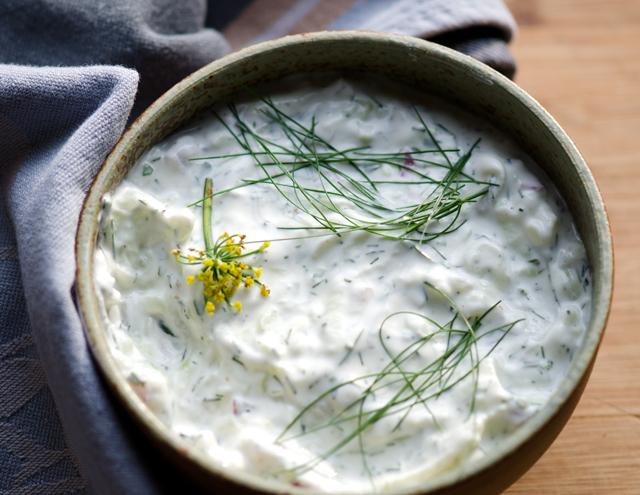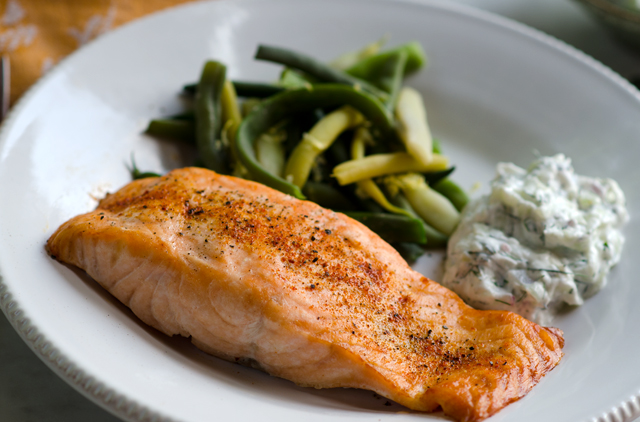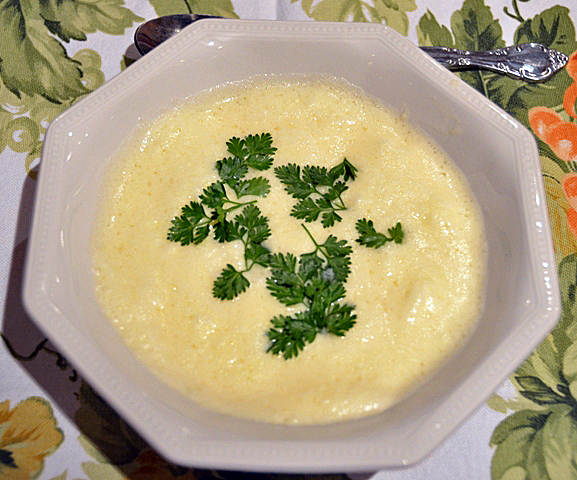 It’s a deliciously creamy sauce or dip based on yogurt, cucumbers and dill, and yes the Greeks do have a word for that, tzatziki. Pronounced in English, zat-zee-key, it is a traditional Greek “meze” or something to whet the appetite. I serve it with chicken, fish and vegetables. Tzatziki is also great as a sauce with gyros or wraps.
It’s a deliciously creamy sauce or dip based on yogurt, cucumbers and dill, and yes the Greeks do have a word for that, tzatziki. Pronounced in English, zat-zee-key, it is a traditional Greek “meze” or something to whet the appetite. I serve it with chicken, fish and vegetables. Tzatziki is also great as a sauce with gyros or wraps.
Until the last several years, you would have needed to drain the yogurt for several hours before proceding with the recipe. With the advent of Greek yogurt, that step is eliminated. “Greek style” yogurt is strained to remove the whey, the watery part. The term “Greek” is not regulated and some yogurts are thickened with cornstarch and milk protein concentrates. Read the label, Greek yogurt should contain only milk and live active cultures. In Greece, sheep’s milk yogurt is traditionally used in tzatziki, I have read that it is sweeter and richer than cow or goat’s milk yogurt. If you are using regular yogurt it needs to be drained in a fine mesh sieve or cheesecloth for about four hours to obtain the thicker texture of Greek yogurt.
Grated cucumber, garlic, dill and sometimes mint are added to the yogurt base. Peel and seed the cucumber before grating. I use a teaspoon to make one long scoop down the middle to eliminate the seeds. Keep the cucumber in halves, they are large enough to shred on a box grater without hurting your fingers. Put the shredded cucumber in a strainer over a bowl and sprinkle a little salt on it. This will drain out some of the excess liquid. I squeeze out the rest of the liquid by putting the cucumber in a clean cloth dishtowel and wringing it out. Alternately, squeeze the cucumber in your hands. This is an important step to ensure the sauce does not become watery.
The dill and mint should be fresh and if I am adding mint I will wait until right before serving since just picked mint can overwhelm the dish. Tzatziki is a versatile sauce that combines the slightly sour tang of yogurt along with the cool refreshing flavors of cucumber, dill and mint. It’s a great addition to your summer menus.
Tzatziki Sauce
Makes about two cups
Ingredients
- 1-1/2 c plain whole or 2% milk yogurt, preferably Greek
- 2 medium cloves garlic, finely chopped
- 3/4 c peeled, seeded, and grated cucumber
- 1 T fresh lemon juice
- 2 t chopped fresh dill
- 2t finely chopped mint (optional)
- 2 t extra-virgin olive oil
Directions
- Put the cucumber in a colander over a bowl and lightly sprinkle with salt. After a half hour wrap the cucumber in a clean cloth dishtowel and squeeze as much liquid out of it as you can. Alternately, squeeze the liquid out with your hands.
- Add the chopped garlic, cucumber, lemon juice, dill, and olive oil to the yogurt mixture. Stir to blend and season to taste with salt. Cover and chill for at least 4 hours before serving.

